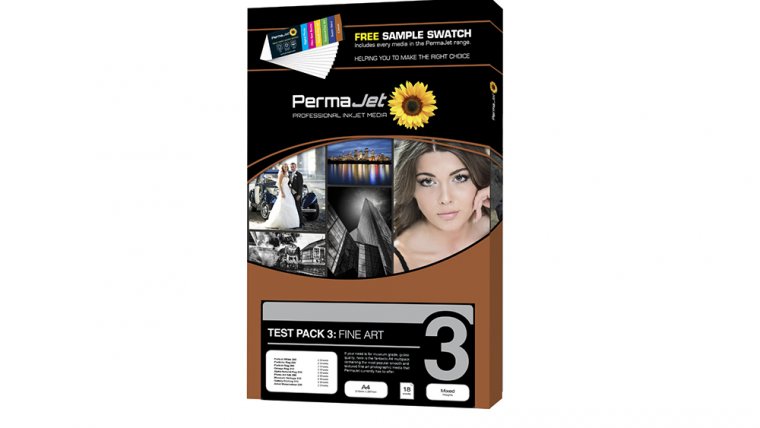
One of the activities that have had the biggest impact on my photography over the years has been printing. Printing your photos is both challenging and rewarding. A handheld print will always show your image in its best light and tonality. However, it will also show and emphasize any imperfections (I am thinking sensor/filter/lens spots!!). And so the process of learning how to produce great prints will undoubtedly improve your overall photography workflows. One of the many aspects of producing a good print is choosing the right paper. Everyone will find and settle on their own personal preferred papers eventually. But that will be preceded by testing out various different papers, of which there are many! Here in this article, I am going to give my thoughts on the Permajet Textured Fine Art paper range. This will be the first in a series of articles discussing and reviewing various photo paper options.
Table of Contents
Permajet is based in the United Kingdom (UK) and are a leading manufacturer and distributor in the photographic imaging industry. They started in the year 1999 and have been making waves in the photographic printing space ever since. When Permajet launched they introduced new paper ranges to the photography and fine art printing communities. Their paper ranges have grown both in number and popularity.
My aim with this article is to provide an unbiased, honest and balanced review of this particular paper range. Permajet were nice enough to provide me with several A4 Test Packs over the past few years for testing purposes. However, this article is in no way sponsored by them or pre-approved by them. The content within this article is based on my own thoughts and personal findings after running a few sample prints using one of my own images. Furthermore, this is not intended to be any form of scientific test. Instead, it is merely my own personal findings and conclusions. Feel free to agree or disagree with them by leaving comments in the comments section.
Before getting into the review of the individual papers themselves, let’s talk about the Permajet Textured Fine Art paper range as a whole.
The Permajet Textured Fine Art paper lineup for 2018 includes the following papers:
The numbers in the paper title reflect the “gsm”, which is an acronym standing for Grams per Square Meter.
Several papers from the original lineup were discontinued and are no longer contained within the Textured Fine Art range. These include the Papyrus 300, Parchment 285, Double Sided Portrait 300 papers respectively. Permajet’s recommendation for previous users of the now discontinued Papyrus and Parchment papers is to switch to the new Museum Heritage paper.
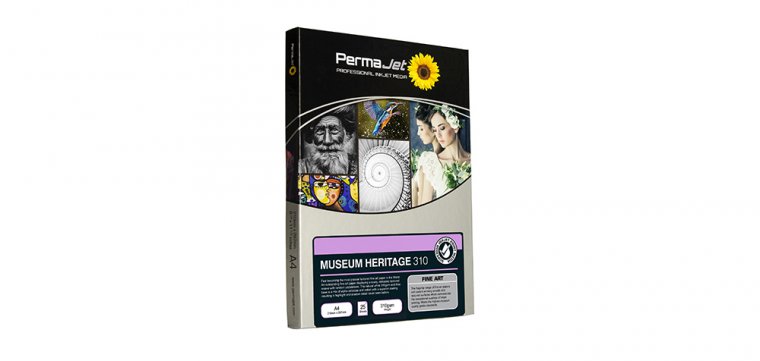
The first paper that I took out of the Permajet Textured Fine Art test pack was the Museum Heritage 310. It is a relatively new and custom product for Permajet that consists of a 25% cotton and a 75% alpha cellulose base which features the same surface as the original Museum 310 paper. However, this paper comes complete with a new coating that provides increased image and shadow detail. This coating also introduced improved ink retention to avoid the “rub-off” that was present with the original Museum 310 paper.
First impressions were good when holding this paper for the first time. It had a really nice feel to it. The 310 weighting certainly helped attribute to this nice feel, as did the actual texture of the paper itself. The texture on this paper is the lightest and the most subtle out of the three papers provided in this range. The textured pattern is nice and visible without being too distracting or overpowering. It leaves a subtle impression upon close up inspection. It also blends in nicely to the image when viewed from a distance.
Compared to the other two papers in the Permajet Textured Fine Art range, images printed on Museum Heritage 310 appear to be very sharp. For a heavily textured paper, I was actually amazed at just how the sharp the final print was.
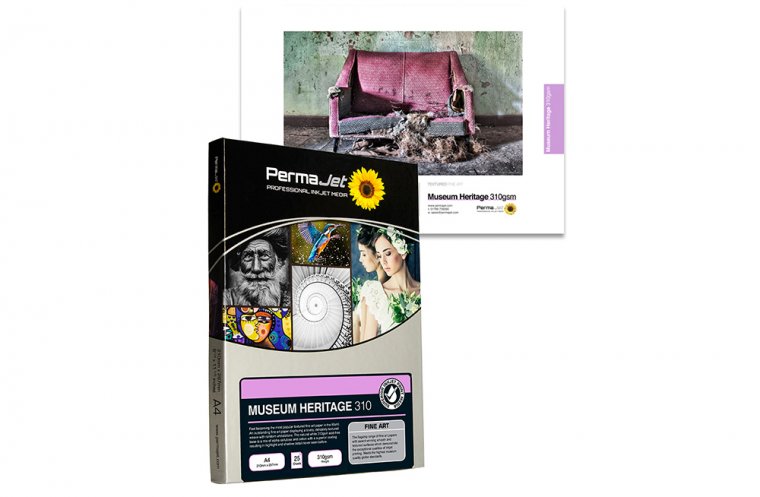
The paper is also a lot brighter (whiter) than the other two papers within this range. And the brightness helps the overall whites to pop off of the page. The high DMAX of Museum Heritage 310 helps to provide some truly nice deep blacks. The combination of the bright paper surface and the high DMAX provides a great contrast between the whites and the black tonal values throughout the printed image.
I really liked that the Museum Heritage 310 paper provided nice shadow detail. Sometimes papers with high DMAX ratings can lose a bit of detail within the shadows areas because of the increased absorption of the black inks. But this paper manages to maintain the shadow areas quite well while simultaneously providing deep blacks.
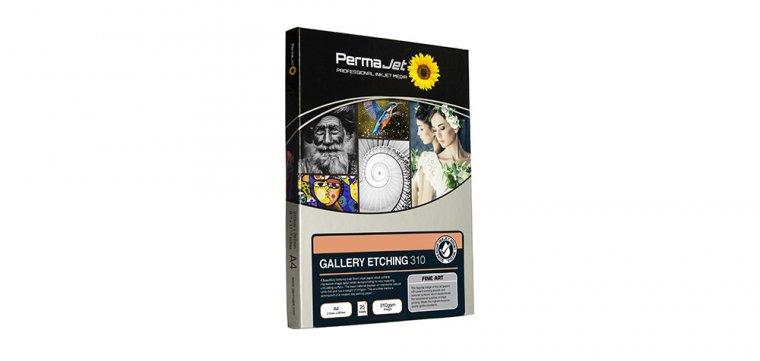
On to the second paper that I tested from the Permajet Textured Fine Art paper range, the Gallery Etching 310.
This particular paper consists of an alpha cellulose base and which has a 310 paper weighting. Its surface is really suited for fine art photography and puts PermaJet into the popular art etchings business sector. Just like the Museum Heritage 310, this paper has a very nice feel when holding it. The texture pattern is a lot more visible and noticeable than compared with the Museum Heritage 310. The Gallery Etching 310 consists of a warmer base tone than the Museum Heritage 310 paper. Some people may prefer this, whereas others might not. Personally, I like my papers to be a brighter shade of white.
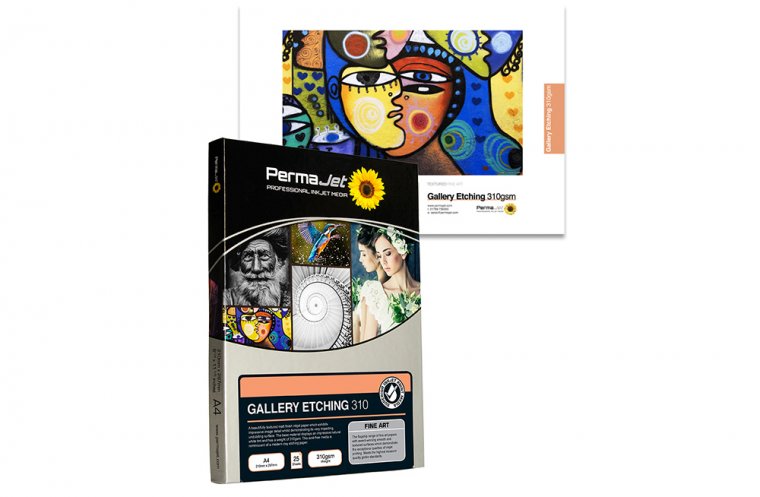
I like the color rendering of this paper and while the DMAX is not as good as compared to the Museum Heritage 310 paper, it certainly still has a pretty good DMAX and displays some nice black tonality and contrast between the blacks and the whites. However, I must confess that I prefer the lighter texture pattern on Museum Heritage 310 over the pattern on this paper. But that is just my personal preference. I can easily see how some people would love the heavier pattern on this paper for their work. It would suit pastel style or watercolor images.
I personally found that this paper lacked the crisp sharpness that the Museum Heritage 310 paper offered. Again, I understand that this might not be a deal-breaker for everyone and different photography genres. But personally, for me, I like my landscape images to be tack sharp. Or as sharp as possible. This paper definitely fell down a little for me on the sharpness area. Just to clarify, it is not the case that is paper cannot produce a sharp looking image. Instead, it is merely that the Museum Heritage 310 produced sharper images. So in truth, it is less of a negative on the Gallery Etching 310 paper but rather a truly great feature of the Museum Heritage 310 paper.
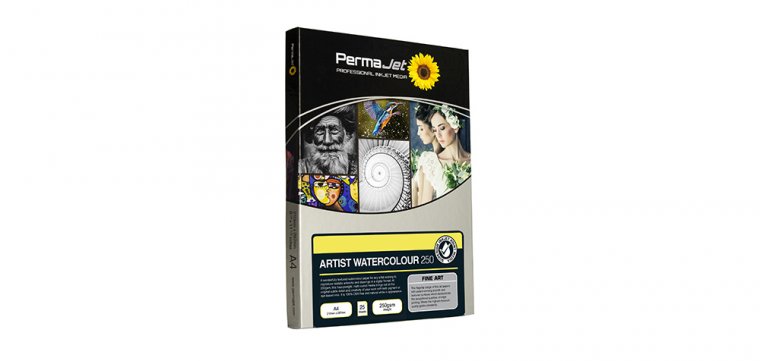
Finally, we come to the third paper in the Permajet Textured Fine Art, the Artist Watercolour 250.
Out of the three papers in the Permajet Textured Fine Art range, this particular paper definitely has the most visible and prominent texture pattern. It consists of an Alpha Cellulose base and has a similar warm tone to that of Gallery Etching 310. Also, it has a lighter weighting of 250 gsm.
On first glance, this paper is clearly has a very heavy texture to it. It is both visible to the eye and also very obvious to the touch when the paper is in your hands. It almost feels like a light Canvas. Personally, I find that the heavy texture works really well to add some depth and a real feeling to elements such as rocks that might be found in the foreground of Landscape and Seascape imagery. However, for me, the texture definitely comes off as being too strong in the sky portions of my images. The texture is too overpowering for my tastes.
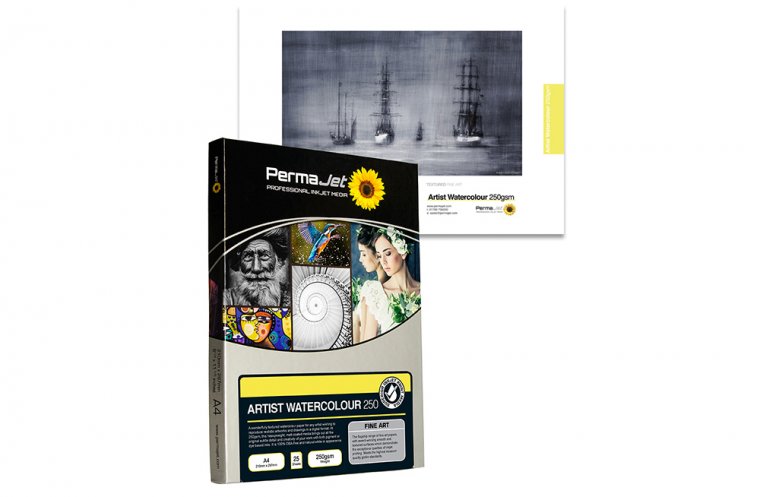
The heavier and more pronounced texture would probably be seen as a negative for me and my work. But again that is just down to my personal preferences and taste. I am fully confident that there are plenty of other photographers and artists out there who would disagree with me and really fall in love with the heavier texture. One of the positives of this paper for me through over the Gallery Etching 310, is that the DMAX is greater so you get richer black tones but at the same time it retains shadow detail really well. I would definitely favor this paper over the Gallery Etching 310.
The three papers within the Permajet Textured Fine Art range are great. All three offer something of great value to photographers and artists. Each has their own pros and cons. Of course, these will differ based on the individual user, as choosing paper surfaces to suit your own style of photographic work is very much personal and very subjective.
There was one clear and the outright winner out of this Permajet Textured Fine Art range. And for me, it is the Museum Heritage 310. This paper ticked more boxes for me. I really liked the renditions of my images on this amazing paper surface. I can honestly say that I will most definitely be adding this great paper to my own personal stock of printing papers.
This test pack contains 18 A4 size sheets consisting of two sheets for each of the nine paper surfaces available within the overall Permajet Fine Art range.
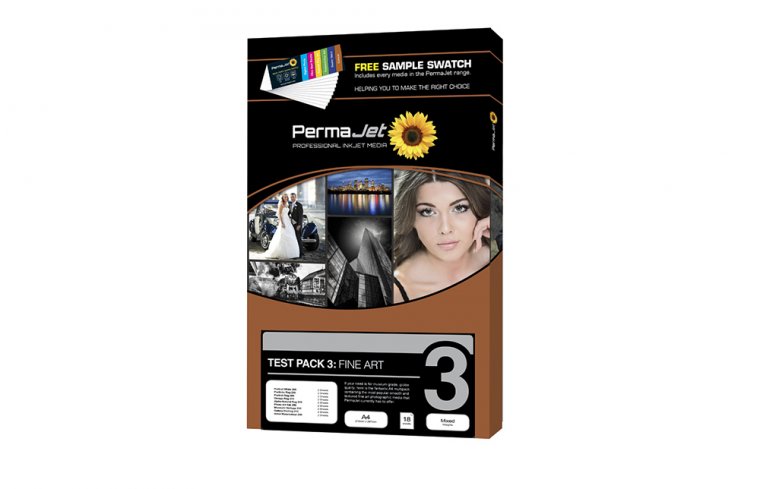
Stay tuned for future articles in this DIY Printing series where I will review and discuss other papers. Let me know what your favorite paper is by responding in the comments section.
Comments (0)
There are no comments yet.